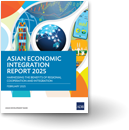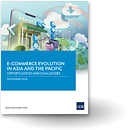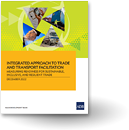ASEAN’s newer members and the Asian noodle bowl: Coming to grips with multilateralism
Arguably the greatest trade policy challenge facing ASEAN’s newer members — Cambodia, the Lao PDR, Myanmar and Viet Nam (CLMV) — are the non-tariff barriers restricting trade. Nevertheless, traditional trade instruments such as the tariff and policy relating to its management remain important and should not be ignored.
The first challenge on this front following ASEAN accession was to implement the Common Effective Preferential Tariff (CEPT) scheme of the ASEAN Free Trade Area (AFTA). The new members kept to the timetable and reduced tariffs according to prescribed schedules for imports from other ASEAN member countries — but did little more.
By doing so, they missed an opportunity grasped by the original ASEAN members: to simplify the tariff structure by multilateralizing preferences. Singapore, Malaysia and Brunei Darussalam, for example, had fully multilateralized more than 80 per cent of tariff lines by 2002. For the remaining tariff lines, the margin of preference (MOP) was less than 10 per cent. Today, with the exception of a few sensitive, but admittedly heavily traded, items, all other tariff lines have MOPs of zero or close to it.
Because the preferential tariff reduction schedules have been ambitious and rapid, AFTA has accelerated the pace of multilateral trade liberalization in the original ASEAN member countries. This has hastened the speed at which these countries have moved toward their goal of free trade. In this way, AFTA’s greatest achievement may be its indirect promotion of openness.
The opposite is true in the CLMV countries. CEPT rates have continued to fall in line with AFTA commitments. The MOP in 2007 was almost 15 per cent in Viet Nam, and around 7–8 per cent in Cambodia and the Lao PDR (Table 1). Thus, ASEAN’s newer members have chosen to operate a two-tier tariff system, with a different CEPT and most favoured nation (MFN) rate for each tariff line.
Regionalism through ASEAN membership should have provided the CLMV economies with an opportunity to pursue multilateralism aggressively, thus allowing regionalism through AFTA to be a building block, rather than stumbling block, toward free and open trade. But these economies have so far failed to capitalise on the opportunity.
| Table 1. MFN and Preferential Tariffs in the CLMV Countries, 1998–2007 | ||||||||||
|---|---|---|---|---|---|---|---|---|---|---|
| 1998 | 1999 | 2000 | 2002 | 2003 | 2004 | 2005 | 2006 | 2007 | ||
| Cambodia | MFN | - | - | 16.46 | 16.41 | 16.41 | 15.81 | 14.26 | 14.25 | 14.18 |
| CEPT | - | - | - | 8.87 | 7.83 | - | 9.08 | - | 6.85 | |
| MOP | - | - | - | 7.54 | 8.58 | - | 5.18 | - | 7.33 | |
| Lao PDR | MFN | 10.34 | 10.33 | 10.33 | 10.34 | - | 10.33 | 9.71 | 9.71 | 9.71 |
| CEPT | – | – | 7.21 | 6.70TD> | - | 6.15 | 3.88 | – | 1.57 | |
| MOP | – | – | 3.12 | 3.64 | - | 4.18 | 5.83 | – | 8.14 | |
| Myanmar | MFN | 5.54 | 5.51 | 5.49 | 5.51 | 5.51 | 5.51 | 5.6 | 5.6 | 5.6 |
| CEPT | - | - | - | 4.81 | 4.81 | 4.26 | 4.29 | - | 3.36 | |
| MOP | - | - | - | 0.71 | 0.7 | 1.25 | 1.31 | - | 2.24 | |
| Viet Nam | MFN | 4.47 | 12.43 | 13.08 | 15.80 | 16.03 | 16.81 | 16.81 | 16.81 | 16.81 |
| CEPT | 3.71 | 7.39 | 7.54 | 6.86 | 6.57 | 5.5 | 4.08 | 2.27 | 2.35 | |
| MOP | 0.76 | 5.04 | 5.54 | 9.06 | 9.46 | 11.31 | 12.73 | 14.54 | 14.46 | |
| – = data not available, CEPT = common effective preference tariff, MFN = most-favored nation, MOP = margin of preference. | ||||||||||
| Source : Author's computations. | ||||||||||
There are numerous other reasons why the CLMV countries should emulate their predecessors. It is almost certain, for example, the CLMV countries could not have anticipated the multitude of ASEAN+1 FTAs they would be dragged into after joining ASEAN. Unless the multilateralization approach is employed, this is a disaster in the making. Multiple tariff rates for identical exports and varying compliance dates only extend the confusion. These countries would be best-off consolidating all of these preferential and MFN rates around the prevailing lowest rate, which is likely the CEPT rate.
But these countries have a choice, and unlike their predecessors, they have chosen against the multilateralization approach. One reason could relate to concerns over potential loss in government revenue. Unlike the original ASEAN members, the CLMV countries continue to derive a significant share of government revenue from trade taxes. Retaining a multiple-rate tariff regime is an attempt to offset anticipated revenue losses.
If the multiple-rate system is going to be effective in practice in mitigating revenue loss, then customs authorities will have to implement rules of origin to determine what rate should apply to each import. Doing this accurately is very difficult for any country, and will be close to impossible for the new ASEAN members. Additional tariff revenue will only be collected if FTA members are levied the higher preferential rate, when they exist, or if non-member country imports are levied the higher MFN rate. Additionally, creating a system whereby multiple tariff rates can apply to each tariff line increases would provide new opportunities for corruption.
In sum, the multiple-rate system is a second-rate system compared with the multilateralized single-rate system because it is more costly to administer, economically distortionary and therefore welfare-reducing, and unlikely to significantly affect government tariff-revenue collections. The CLMV countries should follow the original ASEAN members and multilateralize their CEPT tariff preferences.
(This is an updated version of a posting that appeared in the East Asia Bureau of Economic Research Newsletter of November 2011)




